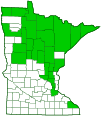belted whiteface
(Leucorrhinia proxima)
Conservation • Description • Habitat • Ecology • Distribution • Taxonomy
|
|
|||||||||||||
Description |
Belted whiteface is a small skimmer, 1 5 ⁄16″ to 1 7 ⁄16″ long. It is highly variable in appearance. Mature males have a black thorax with red spots on the back between the wing bases. The abdomen is long and slender. On red form males, abdominal segments 1 through 3 are red and segments 4 through 10 are black. On white form males, abdominal segments 1 through 4, sometimes segments 1 through 6, are covered with a white pruinescence, and the remaining segments are black. There are sometimes pale hairline spots on the upper (dorsal) surface of the abdominal segments 4 through 7. The face is white. The wings are clear except for a small black patch at the base of the hindwings and a black stigma at the leading edge of each wing. The region of the wing just beyond the forewing triangle has 3 rows of cells. The legs are black. Females have thin, pale, yellowish or reddish-orange spots on the dorsal surface of abdominal segments 4 through 7. The spots of segments 5 and 6 are narrow and ½ to ¾ the length of the segment. The dorsal spots fade with age. Some females develop dull red markings on the back of the thorax between the wing bases. Some develop pruinescence like the white-form male. Some have a conspicuous amber patch on the basal 20% of the wing (where the wing attaches to the thorax). Juveniles have a yellow thorax that becomes brown with age. On juvenile males abdominal segments 1 through 3 are yellow and 4 through 10 are black. On juvenile females there are thin, yellow, dorsal spots on segments 4 through 7. |
Size |
Total length: 1 5 ⁄16″ to 1 7 ⁄16″ |
Similar Species |
Frosted whiteface (Leucorrhinia frigida) is smaller and has a shorter, stubbier abdomen. Males have no red on the thorax between the wing bases. The pruinescence on the abdomen does not extend beyond segment 4. The region of the wing just beyond the forewing triangle has only 2 rows of cells. |
Habitat |
Marshy or boggy lakes and ponds |
Ecology |
Season |
Mid-May to mid-August |
Behavior |
Adults perch horizontally on the ground. They hunt from shoreline vegetation or from the ground in woodland openings. |
Life Cycle |
The female hovers and dips the tip of her abdomen into the water to deposit the eggs. The male guards the female as she deposits her eggs. The naiads live in submerged vegetation. They emerge as adults at night. |
Naiad Food |
Mayfly larvae, mosquito larvae, other aquatic fly larvae, freshwater shrimp, small fish, and tadpoles. |
Adult Food |
Mosquitoes, flies, butterflies, moths, mayflies, and flying ants or termites, and other soft-bodied flying insects. |
Distribution |
||
|
Sources Biodiversity occurrence data published by: Minnesota Biodiversity Atlas (accessed through the Minnesota Biodiversity Atlas Portal, bellatlas.umn.edu, 7/27/2025). |
|
| 7/27/2025 | ||
Occurrence |
||
Common in northeastern Minnesota |
||
Taxonomy |
|
Order |
Odonata (Dragonflies and Damselflies) |
Suborder |
|
Superfamily |
Libelluloidea |
Family |
Libellulidae (skimmers) |
Genus |
Leucorrhinia (whitefaces) |
Subordinate Taxa |
|
|
|
Synonyms |
|
|
|
Common Names |
|
| belted whiteface | |
In 2010, the common name of this species was changed from to red-waisted whiteface belted whiteface. |
|
Glossary
Pruinescence
A waxy bloom that covers the underlying coloration and gives a dusty or frosty appearance.
Stigma
In plants, the portion of the female part of the flower that is receptive to pollen. In Lepidoptera, an area of specialized scent scales on the forewing of some skippers, hairstreaks, and moths. In other insects, a thickened, dark, or opaque cell on the leading edge of the wing.
Visitor Photos |
||
Share your photo of this insect. |
||
This button not working for you? |
||
|
||
|
||
MinnesotaSeasons.com Photos |
||
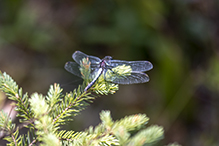 |
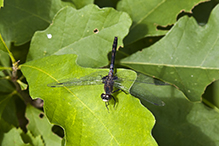 |
|
Mature male |
Mature female |
|
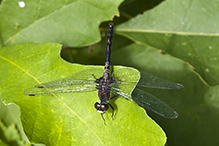 |
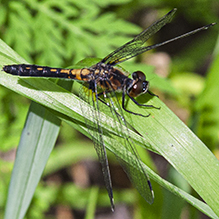 |
|
Mature female |
||
|
||
|
||
|
Immature female |
|
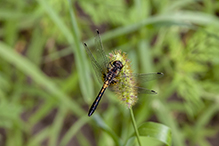 |
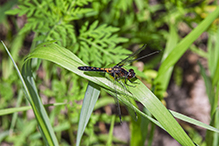 |
|
Immature female |
Immature female |

Slideshows |
|

Visitor Videos |
||
Share your video of this insect. |
||
This button not working for you? |
||
|
Other Videos |
||
|

Visitor Sightings |
||
Report a sighting of this insect. |
||
This button not working for you? |
||
|
|
MinnesotaSeasons.com Sightings |
||

Created 3/11/2019 Last Updated: © MinnesotaSeasons.com. All rights reserved. |
